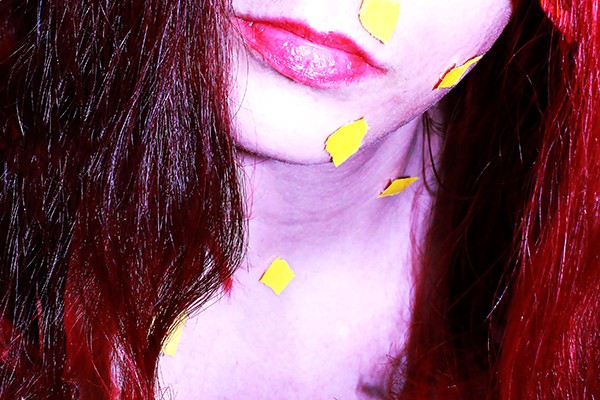
It’s hard to come to terms with a condition that you didn’t want and never asked for. How can a person look at their damaged skin and be okay with what they see, especially if they caused it to themselves? Years before I was given the opportunity of being on The Doctors and received effective treatment for skin picking from Karen Pickett, I challenged negative beliefs and faced my fears by choosing to engage in life instead of retreating.
You must accept where you are at in your journey NOW, not when your skin is clearer. If you are reading this, you’re already on your way to learning more about dermatillomania while also trying to find ways to live a life with more peace in it. I had to find a way to strip down the self-loathing toward my appearance and eventually became non-judgmental about how the marks on my skin defined me. Instead of continuing to mentally spiral in my teens and early twenties, I began viewing my disorder through the eyes of a fictitious alternate society- one where skin imperfections don’t evoke false assumptions about my lifestyle (appearing unhygienic, drug use, etc). A world where people see marks as mere discolorations of the skin instead it being a determinate of beauty. If the world was okay with me having a disorder, would I be?

To an extent, the answer is yes. I would struggle with time management while engaging in the behavior but wouldn’t have to cancel social outings or feel the need to spend additional time covering up scabs because of associated post-picking guilt and shame.
I also needed to find ways to appreciate my body. Through modeling I was able to view myself through another lens. In seeing fully edited images that removed marks, I was able see beyond the spots enveloping my body for the first time since I was a child. I began separating myself from this disorder, internalizing the idea that there was more to me that I couldn’t see because I was trapped in my world of criticisms from others and myself.
The greatest step in gaining acceptance about this disorder was connecting with others who have excoriation disorder. It started by joining online communities as an observer, then becoming active a year before FOREVER MARKED: A Dermatillomania Diary was released. Had I not opened myself to a world with others who struggle the same way I did, my feelings of alienation and the consequences of being misunderstood would have continued destroying my self-worth, and likely my life. Reading other’s experiences in forums lifted my shame because I recognized that my inner dialogue was flawed. I began noticing that I was more compassionate to those who PMed me their stories than I was to myself, who I was extremely critical of and blamed for not being able to stop any of the vicious cycles that comes with being a skin picker.
While you don’t need to model in front of a camera or be an advocate in the body-focused repetitive behavior (BFRB) community to overcome body image issues, these are a few steps that can transform how you see yourself living with dermatillomania. Living with it may not be ideal but understanding how it affects your life can be useful in recognizing when the compulsion arises, allowing you to explore various ways of countering urges and preventing triggers.
You have permission to love yourself with your marks.
You do not have to feel ashamed of something you cannot control.
You are worthy of being accepted no matter what the condition of your skin is.
This disorder does not define you- it’s only one part of you.
